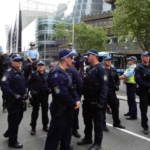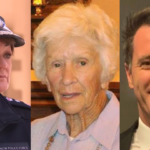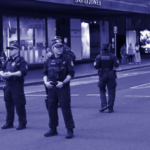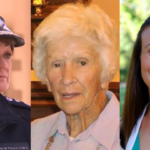The National Justice Project Is Calling for Alternative First Responders to Police: An Interview
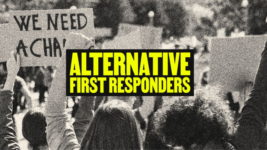
The case that heightened the long-term calls for the state of NSW to invest in an alternative to NSW police officers being the first responders to people having mental health crises in the community was the fatal tasering of 95-year-old great-grandmother Clare Nowland by a NSW police constable called out to deal with her mental health crisis in the early hours of 17 May 2023.
The fact that a constable in his early 30s would consider it appropriate to taser a 95-year-old woman with dementia because she was making for the door of the room she was standing in – Nowland also was holding a knife and using a walking frame at the time – made numerous people across the state speak out about the issue of sending in gung-ho police officers to deal with people in distress.
Following Nowland’s passing in a hospital a week after being tasered in May 2023, four more people had been killed by January 2024 as a result of law enforcement officers being first on the scene to deal with their crises, and while some of these scenarios were more threatening than the Nowland incident, the resulting fatalities may have been avoided if initial responders hadn’t been police.
In the wake of these incidents and many more that have transpired over the years, the National Justice Project has launched the Alternative First Responders campaign, which aims to raise community awareness relating to the harms of police as first responders, and that despite the conventional wisdom, alternatives to sending out armed police to help people in crisis do exist.
Calls for reform across the board
The National Justice Project is not alone in considering that alternative responses to mental health episodes do exist, as opposed to the current method of sending in police officers, whose training and mandate, for the most part, gears them towards dealing with matters in the community that threaten safety in a confrontational manner, which on escalation leads to the application of force.
A number of organisations have partnered with NJP in its campaign to bring about this change. These include the Justice Reform Initiative, Redfern Legal Centre, The Wayside Chapel and Community Legal Centres Australia. However, according to an April 2024 NSW Police Force report, the state law enforcement agency itself is well aware that a change needs to occur.
NSW Police recommends that it works in accordance with NSW Health to develop a new model that would see mental health responders being dispatched to appropriate cases. The police report was released publicly in the wake of the findings into the NSW parliamentary inquiry into health access, which arrived at similar conclusions, and the NSW government went on to second these calls.
The key alternative being discussed these days is the Right Care, Right Person (RCRP) initiative that was launched by Metropolitan Police in Greater London in November 2023, which provides an alternative Triple 1 number for people to call for emergency assistance specifically for mental health crises, and so it avoids the sending out of police who can potentially apply lethal force.
Sydney Criminal Lawyers spoke to Alternative First Responders campaign lead Chloe Fragos about the negative outcomes that result from continuing to rely on NSW police to act as first responders to mental health crises, the principles that should be embedded in any alternative response system that is established, and how members of the community can get involved.
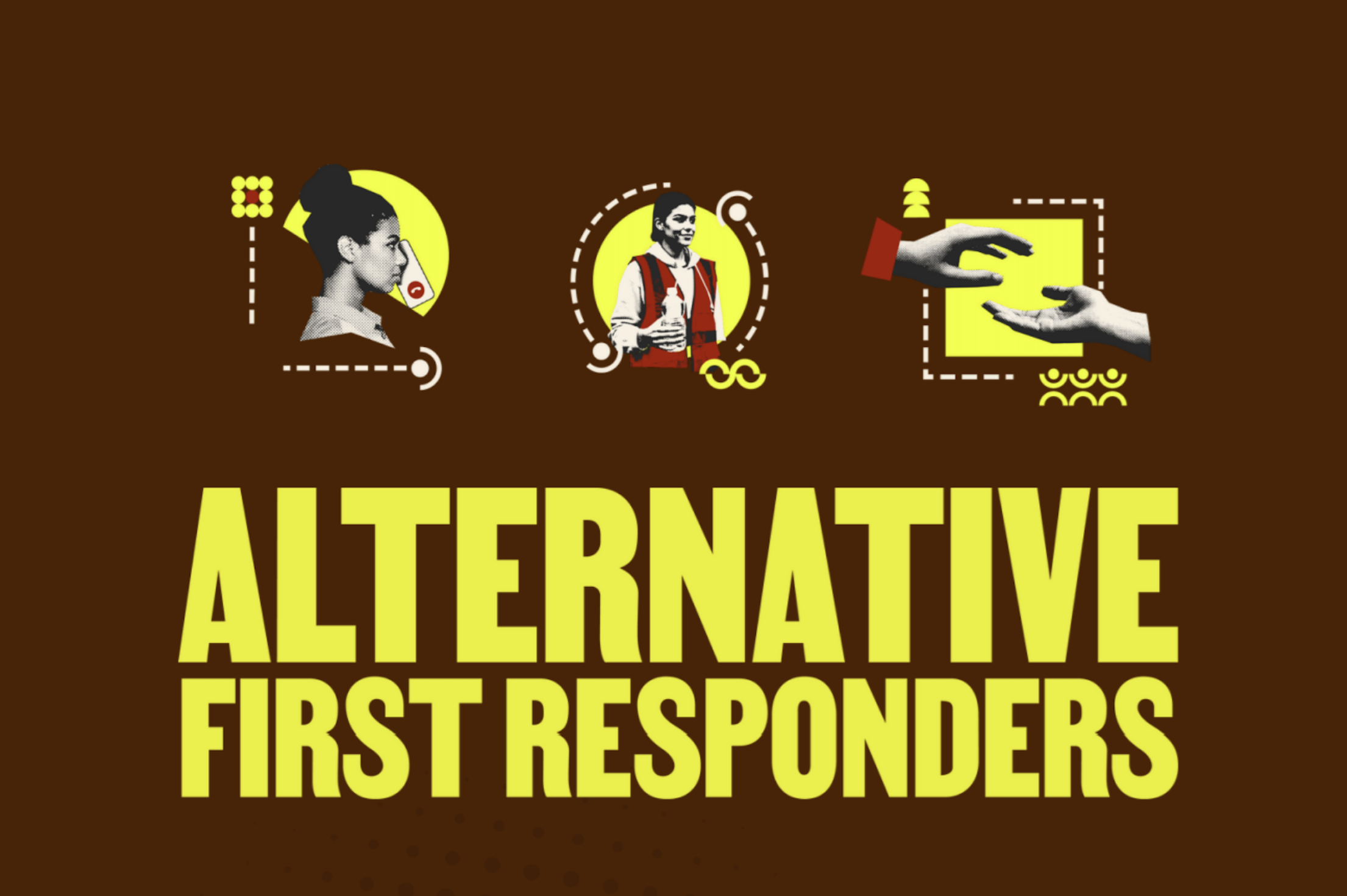
Chloe, the National Justice Project launched the Alternative First Responders campaign earlier this year, off the back of rising calls for a change to the system that sees NSW police officers acting as first responders to mental health crises in the community, which is a system that too often ends in a fatality.
So, can you describe how the system is operating in terms of first responders to mental health episodes? What issues are arising from this?
The National Justice Project has advocated alongside families who have lost loved ones due to police use of force, and against the expanded duties and powers of police in Australia that are funnelling a police-first default to call-outs where there is a social or health need.
The coronial inquests NJP has been involved in recount and find not only that police officers are neither suited to nor trained in mental health de-escalation, but that police practices often directly conflict with what is known to produce the safest and most supportive outcomes for all involved.
Too often, the presence and actions of police escalate situations into crises.
This police-first approach is not limited to mental health distress. What we are witnessing, and what is being echoed by concerned voices across sectors and communities nationwide, is that the ever-growing presence of police is increasing people’s contact with law enforcement, leading to further harm and criminalisation.
We are seeing police-first responses to homelessness, poverty, young people including within schools, aged care, people with disability and more.
At worst, this increased contact has resulted in lethal outcomes. We are seeing people confronted with violence and punitive responses instead of trauma-informed care and connection to appropriate supports.
The harms caused have a ripple effect that extends far beyond the individual – these harms impact friends, families and whole communities. The harm is profound and long-term.
Police continue to be the frontline responders to these callouts because of a longstanding failure to invest in and commit to alternative models, to properly address police malpractice, and to adequately fund health, social and community support services at local, state and federal levels.
When we talk about the goal of having the right response, we keep coming back to the same question: why are we still unwilling to send in the right people? We need to urgently consider the role of investment in alternative first responders.
The National Justice Project has a history of taking on cases that deal with discriminatory policing and the targeting and overpolicing of marginalised groups in the community.
How would you say discriminatory policing factors into the situation where NSW police continue to be first responders to mental health crises? And how might these sorts of prejudicial attitudes be shaping police as first responders?
Both international and national studies confirm that people experiencing mental health concerns are more likely to have interactions with the police, and these interactions can exacerbate or lead to additional negative mental health impacts.
University reports such as ones by RMIT, back this outcome and further highlight that people, who have experienced mental health-related police interventions in Australia, have found police use of force against them “distressing”, and they’ve “expressed feelings of shame, humiliation, criminalisation and dehumanisation”, as a result, along with developing a fear of serious harm from police.
When we interrogate this further, the culture behind these interactions deeply impacts discriminatory policing methods that centre control over care. This first response criminalises health needs.
Further, police as first responders to mental health distress situations is creating further harm, with NSW police recording in 2022, that 43 percent of critical incidents involving serious injury or death by police involved someone experiencing a “mental health crisis”.
Findings and stories from people most impacted demonstrate a clear picture that there is a mismatch with how police are trained and the skills needed to provide a safe first response.
When looking at how police respond, it becomes clear that they do not have the appropriate organisational culture or capability to effectively provide a holistic needs-based response. Even with extra training, research demonstrates that police are still not the best fit for responding to situations that need care and de-escalation.
Policing institutional processes and culture are highly entrenched and prioritise punishment and force. There is also a reluctance to effectively implement recommendations to improve identified systemic failings.
Without accountability, there is little room for nuance in how police may respond. This is why we continue to see repeated fatal encounters involving people in crisis, when police are involved as first callout.
At the heart of this issue is a first response model that fundamentally does not understand, nor is equipped to respond to people in distress through a health and/or social lens. Yet, police are required to take on these roles more than ever.
Alternative First Responders has been raising awareness about this issue since its launch earlier this year. The NJP campaign has created a set of principles to guide an alternative first responder model that is to be established in the state of NSW.
So, can you delve into these principles and how they differ from what is currently happening out on the streets?
The role of alternative first responders is one that aims to meet people when they need support, so they can be connected with their communities, and be treated with care and respect. At the core of these outcomes is a process and approach that rejects punishment or isolation.
What this looks like in practice is not a one-size-fits-all policing solution or policy but is guided by core principles that foster community safety, which includes trauma-informed and culturally aware care, harm minimisation, diversity, cross-sector collaboration and sustainable funding.
What is currently happening is people are being met with force in times of distress and heightened behaviours are interpreted with suspicion and fear, effectively causing social and health needs to be criminalised and punished.
In contrast, alternative responses centre on the principle of trauma-informed care. Through this approach people experiencing distress are recognised beyond their immediate behaviour, which means alternative responders are able to minimise harm, instead of escalating an already heighted situation through the typical police response of “contain and control”.
The benefit of trauma-aware care is it does not cost more than standard services, but it brings diversity and community into the response through community codesign, leadership and localised justice.
Appropriate resourcing is imperative for alternative response models to be successful. Alternative response models must be seen as a long-term investment and move beyond short-term pilots.
The idea of having an alternative first responder other than police is often dismissed as something that there is no alternative to and that’s why police are sent out to these crises.
However, once you start to look into this situation, it becomes clear that isn’t the case and in fact, in other places around the globe, police aren’t the first responders to community mental health crises.
Can you talk about the alternatives that already exist or could exist with a bit of effort applied?
When we look at what drives successful outcomes, it’s clear they’re best achieved through alternative models.
Some pilot programs have been trialled here in Australia, but the strongest evidence of success comes from overseas. We outline these models in our campaign position paper and what is possible when we think beyond a police-first model.
In both the United States and Canada, governments have long invested in building broader ecosystems beyond police for responding to both emergency and non-emergency needs.
From our allies across the ocean, it’s clear: this is no longer just an “alternative”. It’s a necessary part of the toolkit for delivering the right response. In their own words, this isn’t an alternative anymore, it’s a first response.
The first step is to challenge the mistaken belief that more police equal better outcomes. The second is to listen to the growing calls to invest in solutions that are created by and for communities.
Our campaign is backed by over 25 community-based organisations across the country – organisations that believe in the value of alternatives to police and are calling for greater investment in a better first response.
And lastly, Chloe, the NJP Alternative First Responders campaign makes policy recommendations.
So, how does the campaign consider this shift towards a more humane approach to dealing with people in trouble in the community, rather than sending in people dressed in blue waving guns, will come about?
We are ultimately seeking policy courage that challenges the status quo, which is a police-first response that continues to cause harm, and shifts toward valuing community expertise and leadership in shaping the solutions that keep people safe, protected and supported with the right response.
This means expanding who we included in community safety and rethinking how we set up these ecosystems for long-term success.
We encourage your readers to show their support for why this is important to them by visiting our website to learn more about why we need alternative first responders and to take the pledge.



